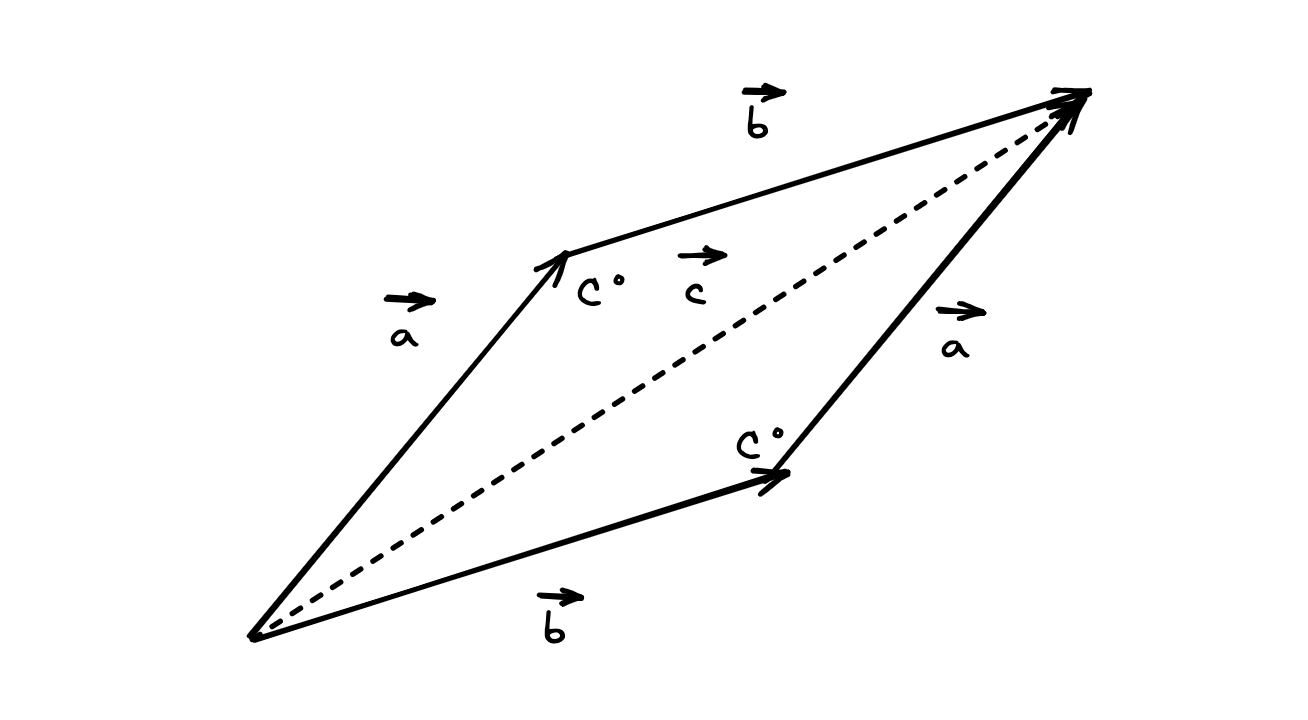go back
- Scalar quantities have only magnitude (e.g. speed, distance)
- Vector quantities have direction and magnitude (e.g. force and velocity)
- Vectors are represented by arrows indicating their magnitude and velocity
- A negative vector value means direction is reversed
- Vectors can be added or subtracted
- The resultant of 2 vectors can be graphically by
- Joining the 2 vector arrows “head to tail” - the resultant is the arrow drawn from the first tail to the second head. This gives a vector triangle

- Drawing a parallelogram by using the 2 vectors as adjacent sides - the diagonal is the resultant. This is most useful for concurrent (acting at the same point) forces

- The triangle and parallelogram methods work for vectors at any angle, not just 90˚
- To find the resultant you can use the sine or cosine rule
- The parallelogram method is better at showing what is actually happening
- The magnitude and direction of the resultant of 2 vectors can be calculaed using the sine/cosine rules (given on SCSA Data Sheet) or the Pythagorean formula (for vectors acting at 90˚)
- For the triangles above:
- Cosine Rule to find the magnitude of side c: c2=a2+b2−2ab×cos(C)
- Sine rule to find the angle it makes from the x axis. They’ll usually give you another angle, to add to this value, as this is not connected to the x or y axis: asin(A)=bsin(B)=csin(C)
- For a right angled triangle, where c is the hypotenuse and a and b are other sides: a2+b2=c2
- Subtraction of vectors
- This is the same as finding the change (Δv) in a vector quantity
- To subtract one vector (A) from another (B), simply add its opposite
- Order is important - the subtracted one must be added as an opposite
- Δv=v−u=v+(−u)
- v = final velocity (speed and direction)
- u = initial velocity (speed andd direction)
- Vector components
- A vector can have effects in directions other than its own direction (but not at 90˚ to its own direction)
- These angular effects are called components
- The magnitude of a component can be found by C=Vcosθ, where θ is the angle in between the vectors
- Any vector can be resolved into 2 rectangular (perpendicular) components, whose magnitude can be found use trigonometry
- Note: you can also find it with this, where θ is the angle it makes with the positive x-axis
- Vcosθ as the horizontal component
- Vsinθ as the vertical component
- The equilibrate of 2 forces is equal in magnitude but opposite in direction, to their resultant

